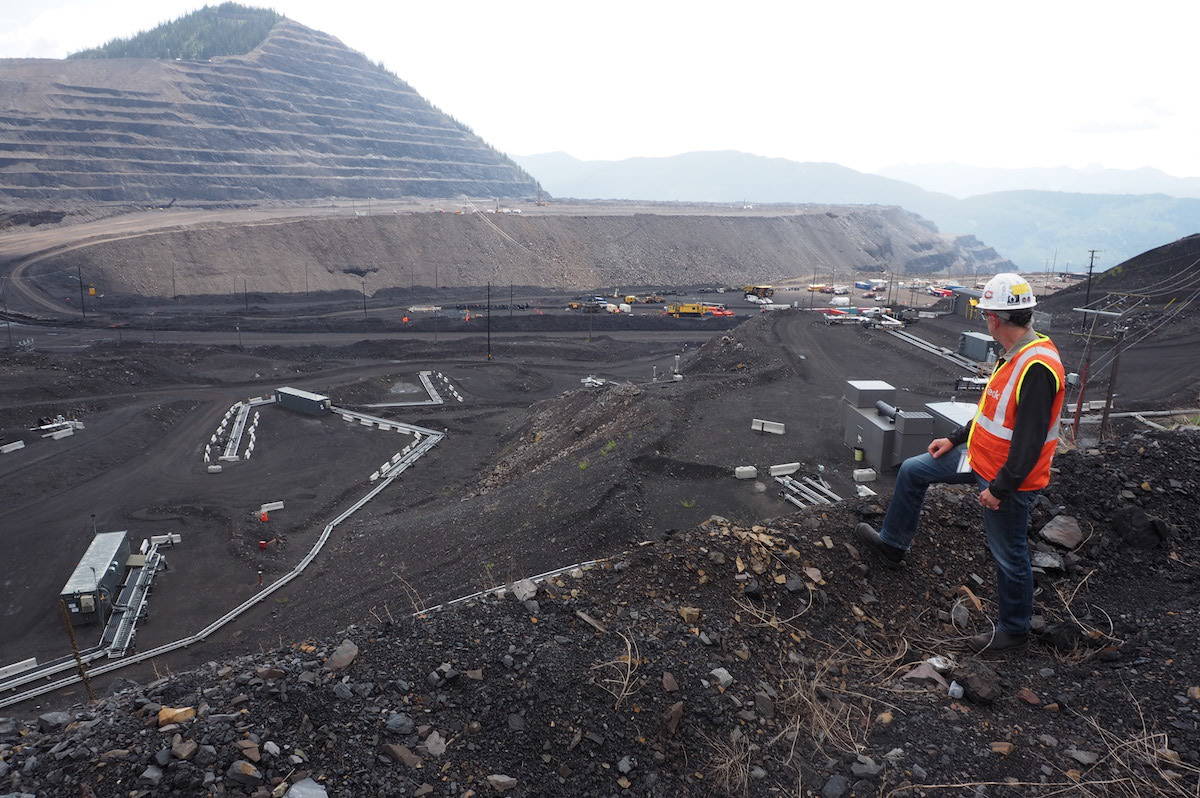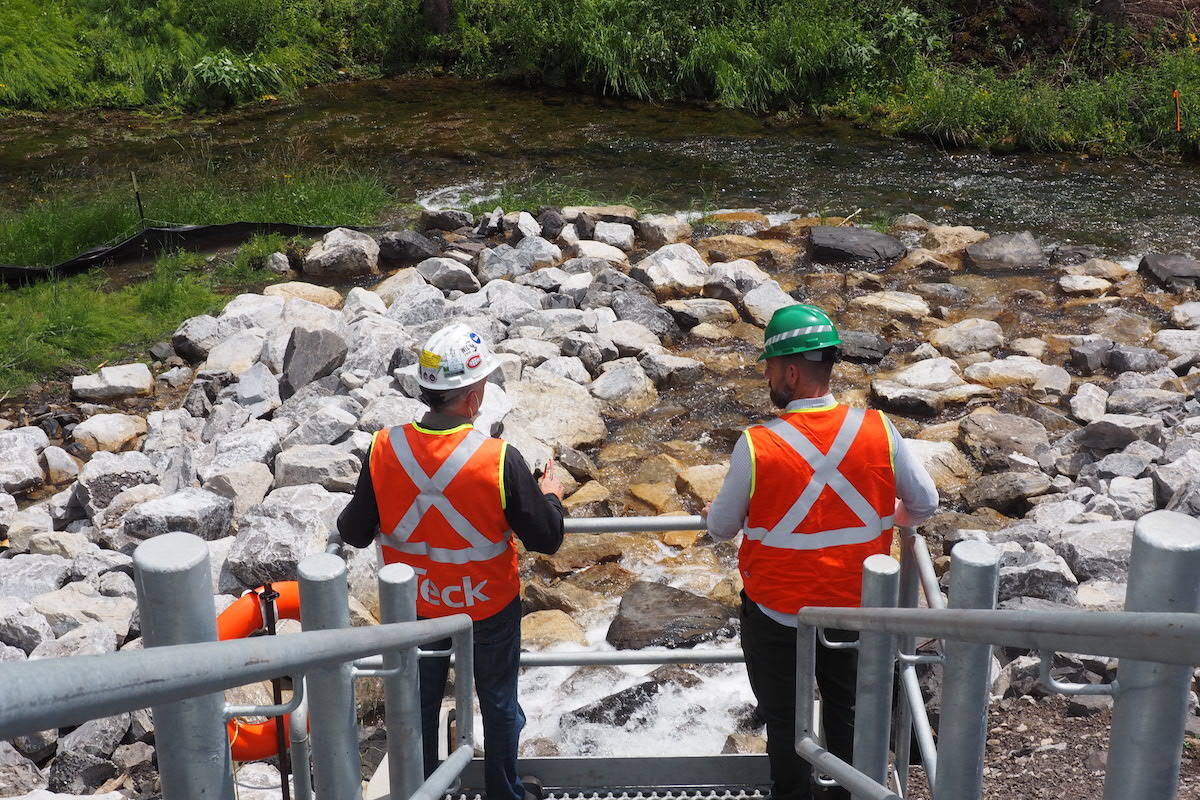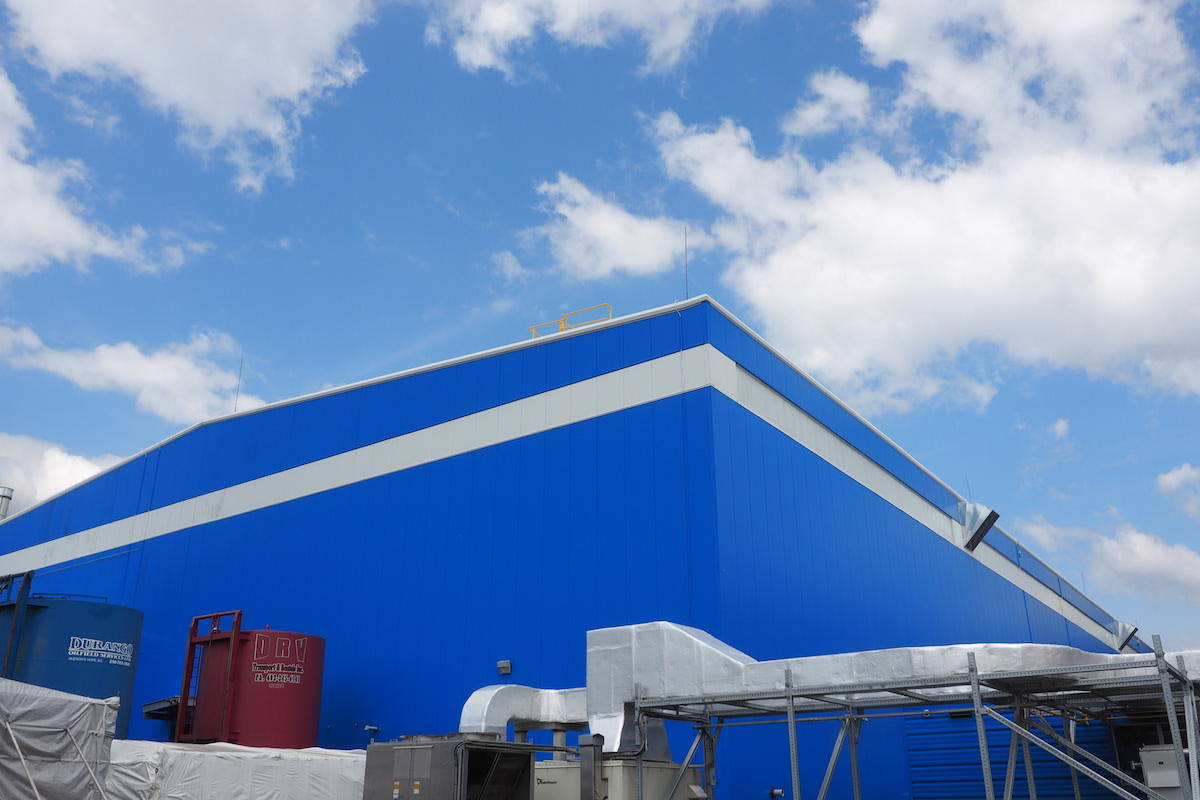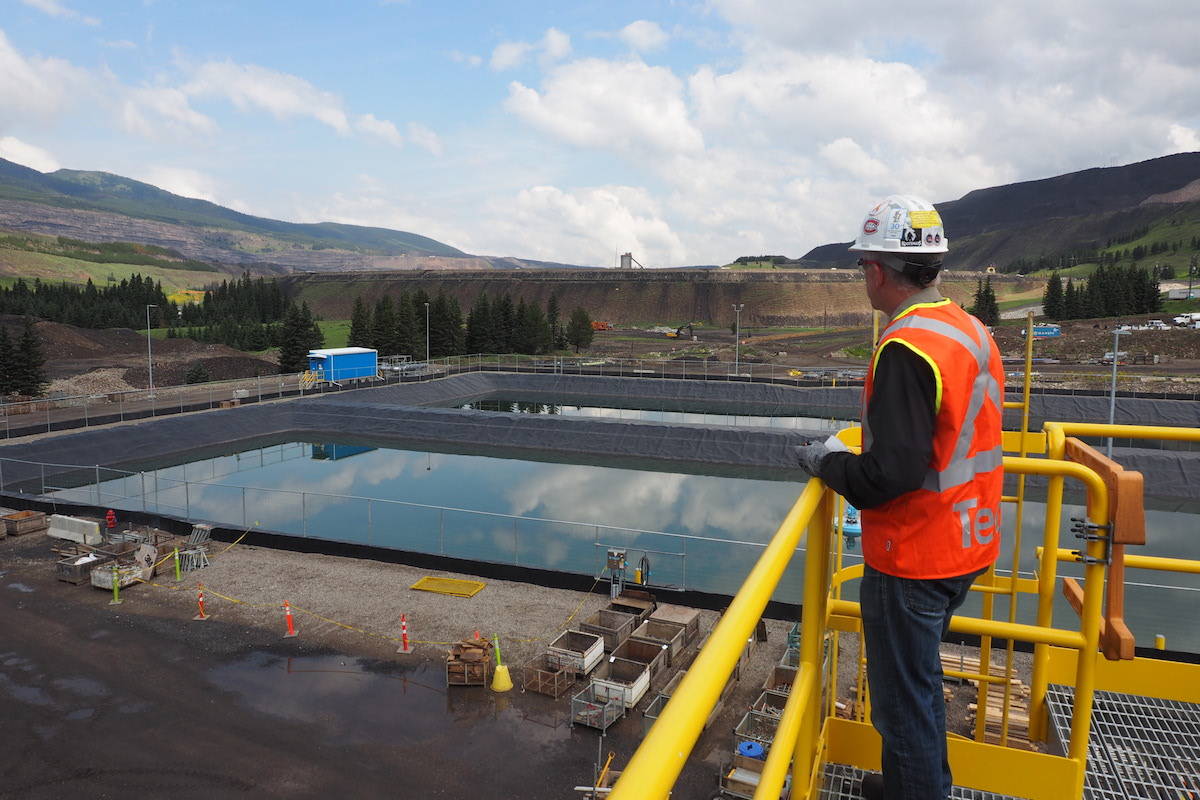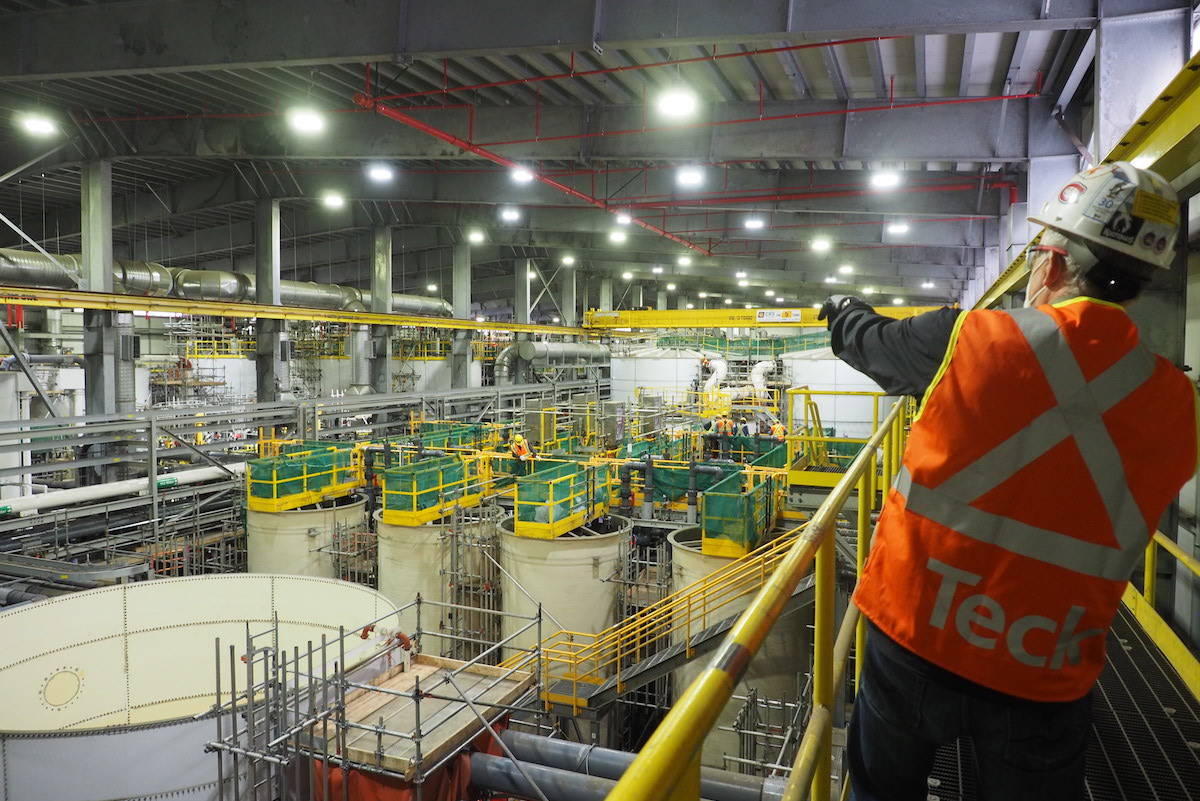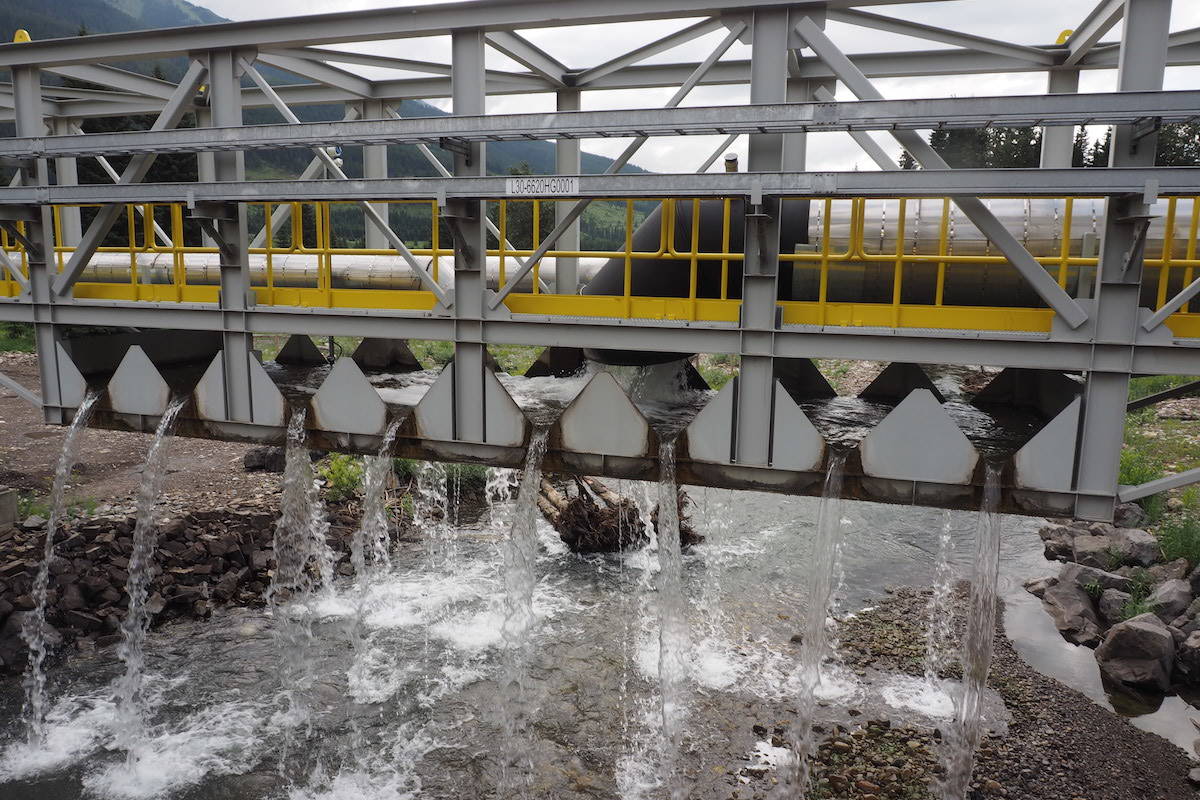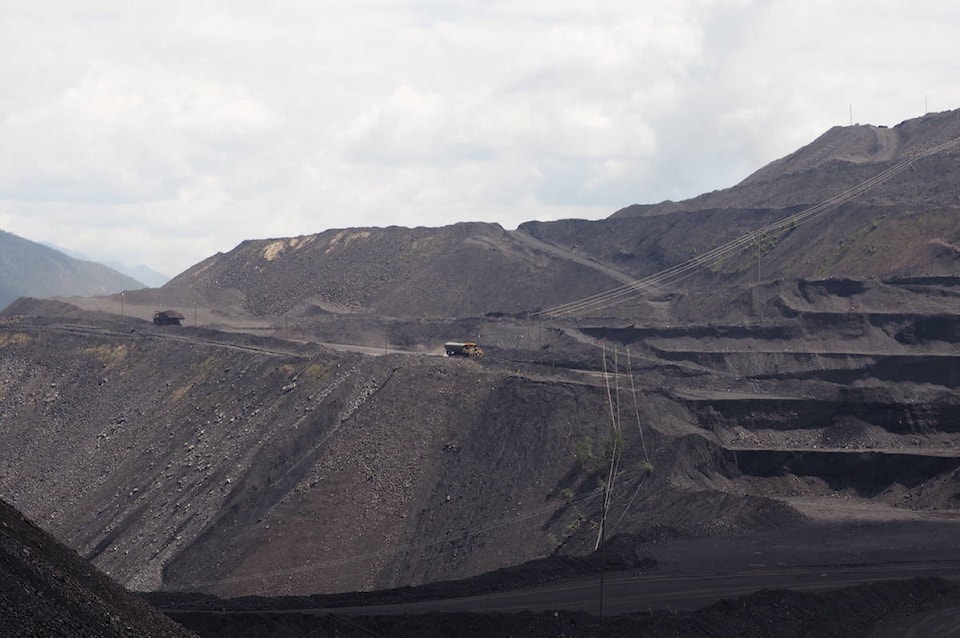Teck’s water treatment facility at Fording River South is $450 million of research, technology, construction and operations all packed together into a big box store.
Painted bright blue and dominating the landscape around it, the Fording River South facility is big enough to be an IKEA - except it’s surrounded by metallurgical coal mining operations and wilderness.
When completed, the facility will filter 20 million litres of water per day of selenium and nitrate, removing 95 percent of the selenium - or a little under 2kg per day. 100 percent of the nitrate is removed.
Referred to officially as an ‘active water treatment facility’, it’s the largest biological water treatment facility in the world, with water piped 3km from nearby creeks and into the state-of-the-art facility. Located below the company’s Fording River operations, the water it will collect is runoff from the mine and its various pits, catching and treating it before it reaches the Elk River where selenium levels are closely monitored.
Originally slated for completion in early 2021, the facility’s schedule was delayed by COVID-19 and other disruptions to supply chains. It’s coming along though, and is expected to begin commissioning before the end of 2021.
The plant uses natural biology to leech selenium back out of the water, which is then pumped back to the same creek it was removed from and returned to the environment.
While Fording River South is the big water project on the go right now, and the next of Teck’s various water treatment facilities in the Elk Valley to come online, it’s the company’s other type of water treatment plant that is getting more attention - the Saturated Rock Fill (SRF) projects.
The SRF projects, of which there is currently one online and another four planned or under construction – use the same process as the Active Water Treatment plants - but at a larger scale.
While Fording River South is a giant loud warehouse filled with pipes and tanks and activity, the Elkview SRF at the company’s Elkview operations above Sparwood is more understated.
Besides being right in the middle of the mine site and therefore impossible for the general public to see, the process (and a good chunk of the hardware) is all underground.
Against a backdrop of mined-out hillsides and machinery at work, it’s a quiet, flat area of gravel, with wells and pipes and the odd shed, but according to Teck’s Dean Runzer, who is general manager of water quality management, far below ground is where the magic happens.
“What we’re standing on right now is an old pit that’s been mined out to about 150 m below us, and then back-filled with rock about 30 years ago,” he said during a tour of the facilities.
The beauty of the SRF process to filter selenium and nitrate is that Teck can use old mined-out pits that have been filed with waste rock to achieve the same result as an active water treatment facility - the biological processes are the same, and so is the result - 95 percent of the selenium is leeched from the water (along with 100 percent of the nitrate) and the water can be piped to creeks that feed into the Elk River afterwards.
The Elkview SRF has water piped from 13km away up into the mine, and it also has water piped from inactive pits. Like Fording River South, Elkview SRF can filter 20 million litres of water per day since it was expanded in 2020 from its original nameplate capacity of 10 million litres per day.
Water is pumped to the site, down into the pit of waste rock into a ‘saturated zone’ where there’s no oxygen where then it filters through the old waste rock fill for anywhere between 30 and 90 days, before it’s pumped back up and out and to where it came from.
(By comparison, the active treatment plants process 20 million litres of water in 24 hours, a process that needs the water to be heated to make it faster).
It’s a big time difference, but the amount of water filtered is the same, and the whole thing costs a third of the high-tech option at $150 million.
“It’s a lot slower process (but) It doesn’t use as much energy and we don’t have to heat the water,” said Runzer.
“The process has more time to slowly react and remove the nitrate and the selenium from the water,” he said, explaining that this allowed workers more time to monitor the water as it goes through the process.
“We understand the reduction that’s happening and the performance of the system. Because its a slow process we can adjust the chemical addition to the system to manage the water quality.”
The other bonus is the fact that in the middle of Elkview, there are many pits to work with - and the pit that the current SRF occupies has plenty of room for expansion.
“We’re only dealing with a portion of the pit. We have the capacity to expand the system.”
It’s easy to expand the system because the rock fill the water is filtered through is the same as the waste rock being driven around by giant trucks in the mine - the only difference is these rocks are deep underground in water-retaining pits, and the process adds natural biology to speed along the process.
Visually, the big tell that there’s water being filtered there is the 20 million litre pool of water off to the side. It’s where water is held for another 24 hours after it comes up from the pit, where it’s measured and monitored to make sure the facility is working as intended.
While the active plants remove selenium which is then buried in lined waste pits on site, the SRFs leave the selenium down in the pit, where it can stay.
It doesn’t mean the SRF’s are one-use though, said Runzer.
“It has hundreds of years of capacity, and we have hundreds of years worth of capacity to expand to if required,” he said.
“(We have) more pits to pick from.
“As we develop mines, we’re also working on ways to ensure there’s a saturated zone once we back-fill a zone - should it be needed for treatment.”
Soon, Teck will be filtering 47.5 million litres per day of selenium and nitrate - 20 million from the Elkview SRF, 20 million from Fording River South, and 7.5 million from the West Line Creek active treatment facility.
There’s another SRF at Fording River North under construction (7 million litres), and there are plans for new SRF facilities and expansions at all of the company’s operations in the valley - by 2031, there are plans to filter 120 million litres per day. Most of it (92.5 million litres per day) will be SRF.
“This technology is the best technology we have from all aspects - it manages treatment the same way a water treatment facility does. It’s cheaper from a capital perspective, it’s cheaper to operate, it’s simpler to operate, it’s easier to manage the water quality because of the size of the facility and the time it takes the water to go through the system.
The facilities are being constructed as part of Teck’s own commitments on water quality as part of the‘Elk Valley Water Quality Plan’ which is a long-term project designed to remove selenium that is released into the Elk River watershed due to the mining activity that’s been taking place in the valley for over a hundred years.
They’ve spend a billion dollars on the work so far, with another $655 million in the works.
Selenium, which is everywhere (but in small amounts) is released into the water from waste rock and runoff from the mines, where it then builds up in the waterways and adversely affects aquatic life in the river.
The selenium escapes from the rocks because it’s exposed to oxygen and water, whereas that same selenium underground can’t release selenium due to a lack of oxygen.
Besides the water treatment facilities (both active and SRF), the company also implements solutions such as water diversion by diverting water around old waste rock dumps, and by researching ‘geo-synthetic covers’ which insulate rock dumps from water, preventing selenium from escaping.
READ MORE: Clear water: Teck water treatment facility nears completion
scott.tibballs@thefreepress.ca
Like us on Facebook and follow us on Twitter
